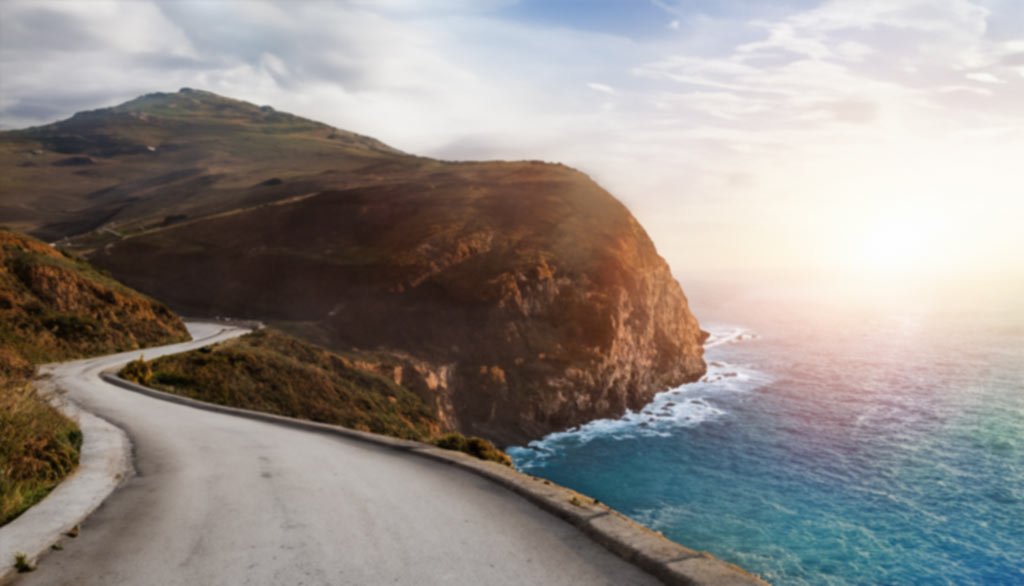Zaros is a village in central Crete, Greece, 48.4 kilometers (30.08 miles) southwest of Heraklion. It lies at the southern foothills of Mount Psiloritis, at 340 meters (1,115.54 feet). The village is known for its freshwater springs, after which it is named “Zaros”, which means “a place with a lot of water” in Greek. Zaros’s history dates back to ancient times. Minoans and Romans settled in the area, drawn by the plentiful water supply. Ruins of Roman aqueducts that once supplied water to the ancient city of Gortyna can still be seen. The village also has several Byzantine monasteries, attesting to its long Christian tradition.
Car rental prices in Zaros vary depending on the rental company, vehicle type and season. Visitors can expect to pay €30 ($32.7, £26.1) to €50 ($54.5, £43.5) per day for a compact car rental. It is best to book in advance, especially during peak tourist season, to secure better rates and availability. Choosing a vehicle with good suspension and high ground clearance is recommended when driving to Zaros and the surrounding areas, such as an SUV or a 4×4. The roads leading to Zaros and within the village are mostly paved but can be narrow and winding. Visitors who are planning to explore the nearby mountains or go off-road, a 4×4 vehicle is advisable to handle the rough terrain comfortably and safely.
What is the history of Zaros?
Zaros, a village in central Crete, Greece, has a rich history dating back to ancient times. The Minoans inhabited the area, later by the Romans, who were attracted to the region’s abundant water resources. Evidence of their presence can be seen in the ruins of Roman aqueducts that once supplied water to the ancient city of Gortyna. The name “Zaros” is derived from the Greek words “Za” and “Rous”, which together mean “a place with a lot of water”. This name is fitting, as the village is known for its numerous freshwater springs that have been a vital source of life for the community throughout its history.
Zaros is also home to several Byzantine monasteries, testifying to the area’s long Christian tradition. These Cretan monasteries and the village’s traditional architecture and scenic beauty have made Zaros an attractive destination for visitors seeking to experience authentic Cretan culture. The village of Zaros is located 48.4 kilometers (30.08 miles) southwest of Heraklion, the capital of Crete. It lies at the southern foothills of Mount Psiloritis, Crete’s highest mountain, at 340 meters (1115.54 feet) above sea level. The municipal unit of Zaros covers an area of 71.803 square kilometers (27.72 square miles). This area encompasses the village and the surrounding countryside, which is characterized by vegetation, olive groves and rocky hillsides.
Where is Zaros located?
Zaros is situated in the central part of Crete, Greece, 48.4 kilometers (30.08 miles) southwest of Heraklion, the island’s capital. The village lies at the southern foothills of Mount Psiloritis, Crete’s highest mountain, at 340 meters (1115.54 feet) above sea level. The nearest airport to Zaros is Heraklion International Airport (HER), also known as Nikos Kazantzakis Airport. This airport is 55 kilometers (34.18 miles) northeast of Zaros. Visitors can reach the village by rental car or taxi, with the journey typically taking 47 minutes, depending on traffic conditions. Zaros is located at 35.13016°N latitude and 24.90460°E longitude. These coordinates place the village in the heart of Crete, allowing visitors to easily explore the island’s various attractions, such as the famous archaeological sites of Knossos and Phaistos and the beaches along the island’s southern coast.
What to know before going to Zaros?
There are four things to know before going to Zaros.
Firstly, it is essential to consider the temperature when planning the trip to Zaros. The village experiences a Mediterranean climate, with mild winters and hot, dry summers. In July and August, the warmest months, temperatures can soar up to 30°C (86°F) or higher, so be sure to pack light, breathable clothing and stay hydrated. During the winter months, from November to March, temperatures can drop to 10°C (50°F), so bringing warm layers is advisable.
Secondly, Zaros offers a variety of things to see and do, catering to diverse interests. Nature lovers can explore the nearby Rouvas Gorge, a scenic hiking trail that winds through vegetation and leads to the impressive Rouvas Forest. History experts can visit the village’s Byzantine monasteries, such as the Monastery of Agios Nikolaos, which showcases beautiful frescoes and architecture. Lake Votomos, a short walk from the village center, also provides a perfect spot for relaxation and picnics.
Thirdly, Zaros is a place to eat fresh, locally sourced ingredients and traditional Cretan dishes, straight from the nearby Lake. Visitors should sample the famous Zaros trout, which is farm-raised in the nearby springs and served at local tavernas. Other must-try dishes include dakos (a Cretan bread salad topped with tomatoes, feta cheese and olive oil), kalitsounia (small cheese pies) and lamb or goat slow-cooked in a wood-fired oven.
Lastly, choosing the right shoes is crucial when visiting Zaros. The village is in the foothills of Mount Psiloritis and the terrain can be uneven and rocky. Comfortable, sturdy walking shoes or hiking boots are recommended, especially if one plans to explore the nearby gorge or engage in outdoor activities. Flip-flops or sandals may be suitable for casual strolls around the village or by the lake, but ensure that one has appropriate footwear for more adventurous pursuits.
What are the best attractions to visit in Zaros?
Listed below are the best attractions to visit in Zaros.
- The Ancient Ruins of Gortyna. Ancient Ruins of Gortyna lie 14.3 kilometers (8.89 miles) southeast of Zaros. Visitors can explore the remnants of this once-flourishing ancient city, including its Roman amphitheater and Odeon, offering insights into ancient Cretan civilization. The site also features the famous Gortyn Law Code inscriptions, an important antiquated legal artifact.
- Lake Votomos. Lake Votomos is 2 kilometers (1.24 miles) northwest of Zaros. It offers a relaxed setting surrounded by greenery, making it an ideal spot for picnics and leisurely walks. Visitors can enjoy boating and fishing on the lake’s relaxed waters. There are several tavernas nearby where tourists can savor traditional Cretan cuisine while enjoying lake views.
- Rouvas Gorge. Rouvas Gorge, also known as Agios Nikolaos Gorge, is located 2.1 kilometers (1.31 miles) north of Zaros. It offers natural scenery with towering cliffs, verdant vegetation and crystal-clear streams. Hiking lovers can go on scenic trails that lead through the gorge, providing opportunities to admire the diverse flora and fauna of the region. The gorge is also home to the Cave of Hermes, a mythical cave associated with the Greek god Hermes.
What are the facts about Zaros?
Listed below are the facts about Zaros:
- Natural Beauty: Zaros is widely known for its natural surroundings, including the Zaros Lake and the nearby Rouvas Gorge. The village is surrounded by landscapes, with greenery, mountains and hiking trails, offering visitors opportunities for outdoor activities and exploration.
- Traditional Agriculture: Zaros is also popular for traditional agricultural practices, particularly the cultivation of grapes and olives. The village is famous for its high-quality olive oil and local wines, which can be sampled and purchased at various establishments in the area.
- Cultural Heritage: Zaros has a significant cultural heritage, with several historical sites and landmarks. The notable attraction is the Vrontisi Monastery, a Byzantine-era monastery that offers a glimpse into the region’s religious history. Visitors can explore the traditional architecture and streets of the village, engaging in the local culture.
What are the Hiking Routes for Zaros?
There are four main hiking routes for Zaros.
Firstly, one of the most popular hiking routes in Zaros is the trail through the Rouvas Gorge, also known as the Agios Nikolaos Gorge. This 5-kilometer (3.11-mile) trail begins at Lake Votomos and leads hikers through the gorge, past the historic Agios Nikolaos Monastery and into the Rouvas Forest, one of the oldest oak forests in Crete. The trail is moderate in difficulty, with some steep and rocky sections and takes 2.5 hours to complete one way.
Secondly, another notable hiking route is the E4 European Long Distance Path, which passes through Zaros. This extensive trail runs from the Nida Plateau to the Timios Stavros (Holy Cross) Church in the heart of the Rouvas Forest. The Zaros section of the E4 path offers breathtaking views of the surrounding mountains and valleys and the opportunity to visit the Agios Ioannis chapel along the way. This route is more challenging, with a total distance of 12 kilometers (7.46 miles) and a hiking time of 4 to 5 hours.
Thirdly, for those seeking a more leisurely experience, the trail around Lake Votomos provides a pleasant and easy hike. This short, circular route, 1.5 kilometers (0.93 miles) in length, takes walkers along the lake’s perimeter, offering opportunities to observe local flora and fauna and enjoy a picnic or rest at the nearby cafes. The Lake Votomos trail is suitable for all ages and fitness levels and can be completed in 30 to 45 minutes.
Adventurous hikers may wish to try on the longer and more strenuous trek from Zaros to the summit of Mount Psiloritis, Crete’s highest peak. This challenging route covers a distance of 20 kilometers (12.43 miles) and involves a significant elevation gain. Hikers should be well-prepared, physically fit and equipped with proper gear as the trail navigates through rugged terrain and can take 8 to 10 hours to complete. The reward is an unparalleled view of the island from the summit, standing at an impressive 2456 meters (8058.14 feet) above sea level.
Is Zaros safe?
Yes, Zaros is safe. Zaros and Crete has a reputation for being a safe island, with crime rates lower than those of many other popular tourist destinations in Europe. This extends to the village of Zaros, where serious crime incidents are exceedingly rare. The strong sense of community and the village’s small size create an environment where residents look out for one another, further enhancing overall safety. The consensus among locals and frequent visitors is that the village is a very safe place. Travellers should always exercise common sense and take basic precautions, just as they would when traveling to any new destination, including being aware of one’s surroundings, keeping valuable items secure and not leaving belongings unattended, but the overall risk of falling victim to crime in Zaros is very low.
What is the best season to visit Zaros?
The best seasons to visit Zaros are the shoulder seasons of spring (April to May) and autumn (September to October). Firstly, during these months, the weather is pleasant, with temperatures ranging from 18°C (64°F) to 25°C (77°F). This makes it ideal for outdoor activities such as hiking, exploring the village and enjoying the surrounding natural beauty. Mild temperatures make visiting local attractions, such as the Byzantine monasteries and the Lake Votomos, more comfortable. Visiting Zaros during the shoulder seasons allows visitors to avoid the peak summer crowds that often descend upon Crete’s popular destinations. People enjoy a more peaceful and authentic experience without mass tourism. Having more opportunities to interact with locals, savor traditional Cretan cuisine at local tavernas and explore the village’s streets and shops without navigating a crowd of tourists. The shoulder seasons offer a chance to witness the beauty of Zaros’ natural surroundings in full bloom. The hillsides come alive in spring with colorful wildflowers, creating a breathtaking landscape perfect for nature lovers and photographers. Autumn, on the other hand, offers a different kind of beauty, with the changing colors of the foliage creating a warm and inviting atmosphere. The shoulder seasons often feature local festivals and events, such as the Chestnut Festival in October, which provide a unique insight into Cretan culture and traditions.
What is the best vehicle for visiting Zaros?
A medium-sized car is the best vehicle for visiting Zaros. A medium-size car, such as the Volkswagen Polo, Opel Corsa and Toyota Yaris, offer a perfect balance of comfort, fuel efficiency and maneuverability. They provide enough space for passengers and luggage, making them ideal for families or small groups while still compact enough to navigate the narrow streets and winding roads common in Cretan villages like Zaros. Medium-sized cars are well-suited for the driving conditions in and around Zaros. As Zaros village is located in the foothills of Mount Psiloritis and the surrounding roads can be steep and winding. A medium-sized car with good handling and sufficient power will make these drives more manageable and enjoyable, allowing one to focus on the breathtaking scenery rather than worrying about their vehicle’s performance.
Visitors have a wide array of options when it comes to car rentals in Crete. Many car rental companies, such as Rental Center Crete, have offices at Heraklion International Airport and in major cities throughout the island. Companies often have a deep knowledge of the island and can provide valuable advice and recommendations for visiting Zaros. When selecting a specific car model for the Zaros adventure, one must consider individual needs and preferences.
Can you rent a car to go to Zaros?
Yes, visitors can rent a car to go to Zaros and it is highly recommended for those who want to explore the village and its surrounding areas with ease and flexibility. Renting a car allows visitors to travel at their own pace without relying on public transportation or taxi services, which can be limited in this rural area. Car rental services are widely available throughout Crete, with many international and local agencies offering a variety of vehicles to suit different needs and budgets. Visitors can easily rent a car at Heraklion International Airport upon arrival or from offices in major cities and towns across the island. The process is straightforward and most agencies accept international driver’s licenses, making it convenient for tourists worldwide to rent a car. Consider factors such as the size of the group, luggage requirements and planned activities when renting a car to visit Zaros. A medium-sized car, such as a Volkswagen Polo or a Toyota Yaris, is the best choice for navigating the roads and narrow streets of Cretan villages including Zaros.
What are the factors to consider before renting a car in Crete?
Listed below are the factors to consider before renting a car in Crete:
- Insurance: Before reserving a car rental in Crete, it is important to consider insurance coverage. Check if the rental company provides comprehensive insurance that covers damages, theft and liability. It is recommended that the terms and conditions of the insurance policy be carefully reviewed to understand the coverage and any additional costs or deductibles involved.
- Driver’s Age: Some car rental companies may have age restrictions or additional fees for drivers under a certain age. Verify the minimum age requirement and any surcharges that may apply.
- Driver’s Gender: Certain rental companies may have specific policies regarding male or female drivers, so it is essential to check if there are any gender restrictions or additional requirements.
- Car Type: Consider the type of car that suits the needs and preferences. Determine the size, features and specifications required for the trip. Whether one needs a compact car for easy maneuverability or a larger vehicle for more space, selecting the right car type will ensure a comfortable and convenient experience.
- Documents needed for renting a car: Ensure all necessary documents are available for the car rental. This includes a valid driver’s license, passport or identification and a credit card for the reservation and security deposit. Check the rental company’s specific requirements to avoid any last-minute complications.
How much does a car rental in Crete cost?
Car rental in Crete costs vary depending on the number of passengers, itinerary, car type, location and duration. The average price of renting a vehicle in Crete is €30 ($32.7, £26.1) to €40 ($43.6, £34.8) per day. A car rented for a whole week will cost an average of €250 ($272.5, £217.5), while renting for the weekend will cost €78 ($85.02, £67.86). Affordable car rentals in Rental Center Crete vary depending on the car type.
What are the best places to eat to in Zaros?
Find below the best places to eat in Zaros.
- Vegera. Vegera is located in the heart of Zaros, a short walk from the town center. It is a traditional taverna serving authentic Cretan cuisine focusing on locally sourced ingredients. Dishes available include moussaka, lamb kleftiko and dakos (Cretan bruschetta), providing visitors with a taste of the island’s culinary heritage. Prices at Vegera are reasonable, with main courses typically ranging from €8 ($8.72, £6.96) to €15 ($16.35, £13.05).
- Eleonas Country Village. Eleonas Country Village is 2.2 kilometers (1.37 miles) southwest of Zaros. It offers a rustic dining experience in the countryside, surrounded by olive groves and vineyards. The restaurant specializes in traditional Cretan dishes, such as grilled meats, fresh salads and homemade pastries. Guests can expect to pay €10 ($10.9, £8.7) to €20 ($21.8, £17.4) for a main course at Eleonas Country Village.
- Zaros Lake Restaurant. Zaros Lake Restaurant overlooks the Lake Votomos, 2 kilometers (1.24 miles) northwest of Zaros. It features a scenic outdoor terrace where diners can enjoy views of the lake and surrounding mountains. The restaurant serves various dishes, including fresh fish, seafood pasta and grilled vegetables, highlighting the region’s flavors. Prices at Zaros Lake Restaurant are slightly higher due to its scenic location, with main courses ranging from €12 ($13.08, £10.44) to €25 ($27.25, £21.75).
What are the best beaches in Zaros?
Listed below are the to beaches to swim near Zaros.
- Matala Beach. Matala Beach is located 28.3 kilometers (17.59 miles) southwest of Zaros, making it a longer journey from the city center. It is known for its unique landscape featuring cliffs and caves, which were once used as Roman tombs and later became a symbol of the hippie movement in the 1960s. The beach offers clear turquoise waters ideal for swimming and snorkeling, attracting visitors seeking a relaxed seaside retreat. Facilities such as sunbeds and umbrellas are available for rent and there are several beachfront tavernas where visitors can enjoy fresh seafood and traditional Greek dishes.
- Trypiti Beach. Trypiti Beach is 40.1 kilometers (24.92 miles) southwest of Zaros. It is known for its natural beauty, with crystal-clear waters and soft golden sands framed by towering cliffs. The beach is accessible via a short hike down a steep path, offering a secluded and peaceful atmosphere away from the crowds. Visitors can enjoy swimming and sunbathing in this ideal setting, with opportunities for snorkeling around the rocky coastline. There are no amenities directly on the beach, but nearby tavernas and cafes offer refreshments and snacks for beachgoers.
- Agia Galini Beach. Agia Galini Beach is 32.2 kilometers (20.01 miles) southwest of Zaros. It features a long stretch of golden sand lapped by the clear waters of the Libyan Sea, offering panoramic views of the coastline. Agia Galini beach has sunbeds and umbrellas for rent, making it a comfortable spot for sunbathing and relaxation. Visitors can also explore the fishing village of Agia Galini, known for its traditional tavernas serving fresh seafood and local delicacies.
What are the top places to stay in Zaros?
Find below the top places to stay in Zaros.
- Eleonas Country Village. Eleonas Country Village is located 2.2 kilometers (1.37 miles) southwest of Zaros, offering a secluded stay in a traditional Cretan village setting. It features stone-built cottages surrounded by olive groves and vineyards. Guests can enjoy various activities, including horseback riding, cycling and hiking, making it an ideal choice for nature lovers. The village has a taverna serving authentic Cretan cuisine and guests can also use the outdoor pool and sauna facilities. Prices for a cottage at Eleonas Country Village typically range from €70 ($76.3, £60.9) to €120 ($130.8, £104.4) per night.
- Keramos Hotel. Keramos Hotel is located in the center of Zaros, within walking distance of the town’s amenities. It is a boutique hotel offering comfortable rooms with modern amenities, including air conditioning and satellite TV. Guests can enjoy a continental breakfast served daily at the hotel’s restaurant, which also offers traditional Cretan dishes for lunch and dinner. Prices for a double room at Keramos Hotel typically range from €50 ($54.5, £43.5) to €80 ($87.2, £69.6) per night.
- IDI Hotel. IDI Hotel is 1.3 kilometers (0.81 miles) from the town center of Zaros, providing a peaceful retreat surrounded by nature. It is a family-run hotel with cozy rooms featuring balconies overlooking the countryside. Guests can relax by the outdoor swimming pool or explore the nearby hiking trails. The hotel’s restaurant serves homemade Greek cuisine made with fresh, locally sourced ingredients. Rates at IDI Hotel start from€40 ($43.6, £34.8) to €70 ($76.3, £60.9) per night for a double room.
- Nana Apartments. Nana Apartments are located in the heart of Zaros, offering convenient access to the town’s attractions and restaurants. It is a family-friendly accommodation option with spacious apartments featuring fully equipped kitchens and private balconies. Guests can relax in the communal garden area or take a short stroll to Lake Votomos. There are several tavernas and cafes within walking distance where guests can enjoy meals and drinks. Rates for an apartment at Nana Apartments start from €35 ($38.15, £30.45) to €60 ($65.4, £52.2) per night.
How is the nightlife in Zaros?
There is no active nightlife in Zaros, The major night activities in Zaros include a selection of traditional tavernas and cafes where visitors can enjoy a relaxing evening out. These places typically serve local wines, beers and spirits, including the famous Cretan raki. Visitors can enjoy a drinks or a traditional Cretan dish often accompanied by traditional music or conversations with locals. Zaros may not be the destination for people looking for an active nightlife experience.
Is Zaros a UNESCO World Heritage Site?
No, Zaros is not a UNESCO World Heritage Site. The archaeological site of Zaros, despite its historical significance and ongoing excavations, has not been designated as a UNESCO World Heritage Site. This status is conferred by the United Nations Educational, Scientific and Cultural Organization (UNESCO) to sites that possess outstanding universal value and meet specific criteria related to their cultural, historical or natural significance. Zaros undoubtedly holds archaeological importance, particularly due to the presence of Minoan, Roman and Byzantine ruins, but it has not yet gained the international recognition required for inclusion in the World Heritage List. This list comprises sites deemed to be of exceptional cultural or natural heritage for humanity and the process for nomination and evaluation is rigorous. The absence of UNESCO World Heritage status does not diminish the value of Zaros as an archaeological site. Researchers and historians continue to study the area, uncovering valuable insights into the ancient civilizations that once inhabited the region. Efforts are underway to raise awareness and promote the preservation of Zaros, hoping to secure UNESCO recognition.
Last updated on .








